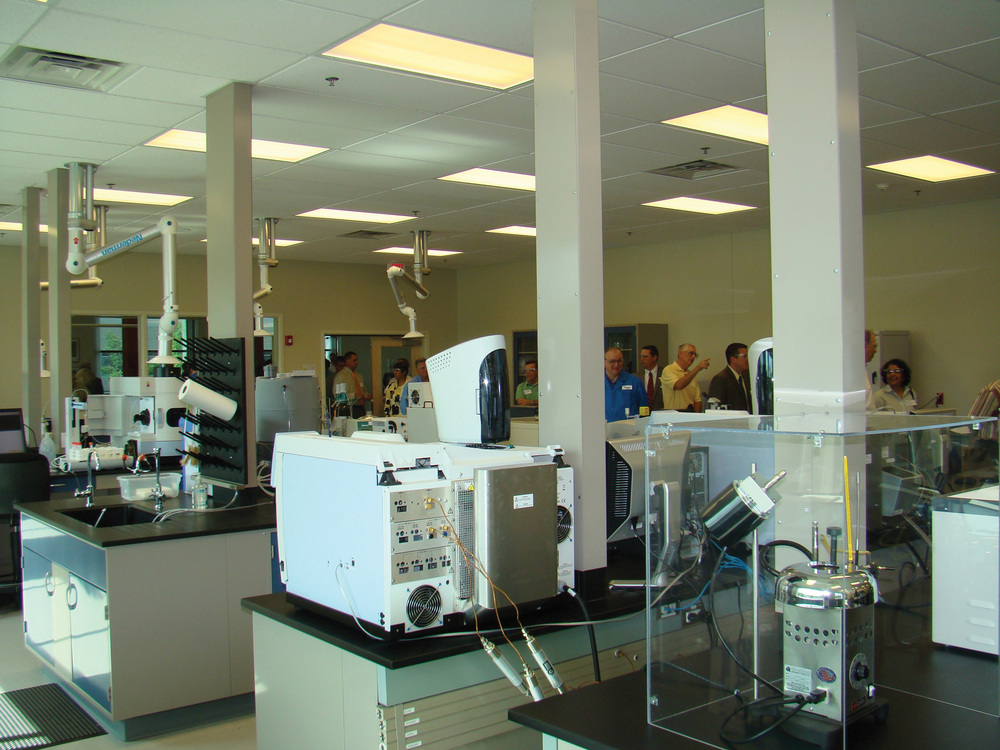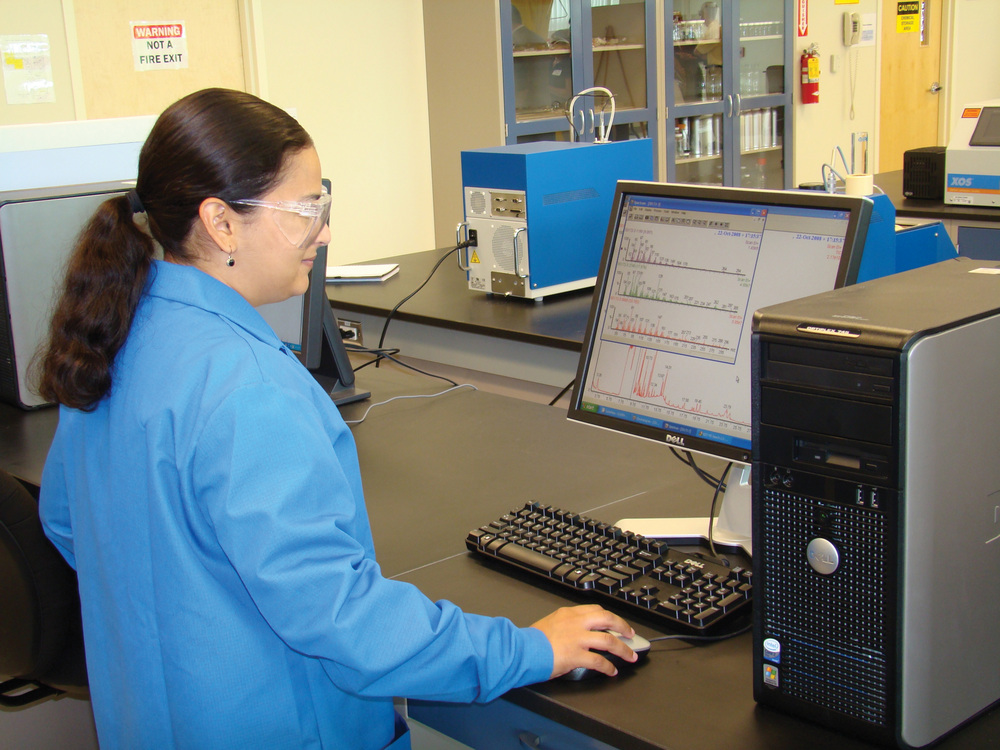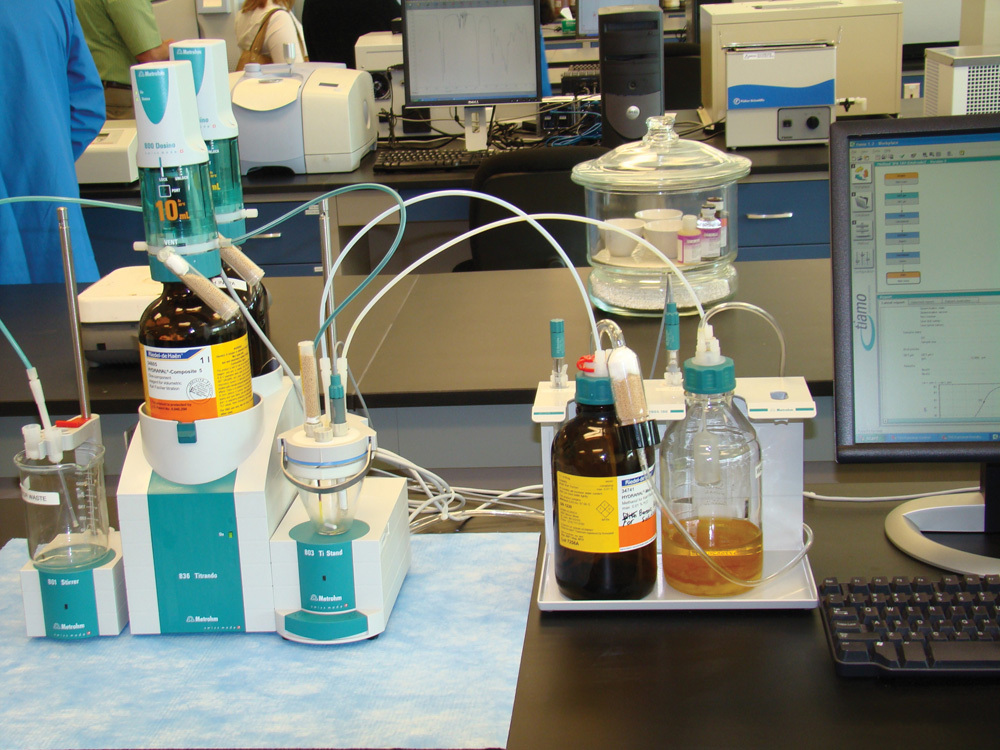Easier Than Ever





PHOTO: RON KOTRBA, BBI INTERNATIONAL
October 25, 2011
BY Luke Geiver
Biodiesel testing services and analytical solutions have never been easier to access. Small producers have the option to outsource product testing on any sample, from cloud point to total glycerin, and save hundreds of thousands of dollars on the required equipment. For large producers, it’s no different. A sample can be shipped overnight, tested, and returned the next business day giving an almost instant readout of the process’ effectiveness at making a quality, on-spec fuel. And for the qualified do-it-yourselfer, an array of testing equipment is available to make any biodiesel production facility lab top of the line.
Several leading biodiesel testing and analytic service providers operating in the industry today spoke with Biodiesel Magazine about modern testing practices, how the industry has changed, and why the industry may grow in the future.
Change is Good
John Coonfare cares about state incentives, cheap feedstocks and clients who can pay their first bills on time. Coonfare is the biodiesel lab manager for Midwest Laboratories Inc. He’s been testing biodiesel since before the boom years in Omaha, Neb., and for him, change in the industry is a good thing. Around 2008, his team received as many as 20 to 30 samples a week from separate producers, and at that time, he says, he didn’t always know what he was going to get. At one point, Coonfare had to be extra careful when testing because some producers were unwilling to disclose the contents used to make their fuel. Because of that, he was once almost injured when a sample containing gasoline caught fire near a lab burner.
But today, after the ramped up testing requirements linked to the ever-expanding list of ASTM specs, things are different for his team. “I think the samples are a lot better,” he says, and now, established companies rarely have an issue with their fuel unless “some major glitch happens.”
The change in fuel quality isn’t only about the expanded role and testing requirements of ASTM. Coonfare believes that the fluctuations in the biodiesel tax incentive policy, which have created an atmosphere of uncertainty based on the on-again off-again history of the credit, have actually helped eliminate the type of companies that put his testing team at physical risk and the overall biodiesel industry in question due to low-quality, hazardous fuel produced from unproven methods. “A lot of the smaller businesses (doing just that) couldn’t handle losing the tax break,” he says.
Advertisement
Although changes brought on by the onset of new testing procedures like cold soak filtration and the weeding-out effect created by the inconsistent tax incentive have made the industry stronger, they have also made it more difficult for new biodiesel startups to be successful, Coonfare says, at least if they want to test their own fuel. “I know a lot of people want to get certified and get their lab certified, but it is hard,” he says. By hard, Coonfare means financially difficult. As another member of the Midwest Lab’s team explains, some of the gas chromatography equipment typically used to test biodiesel can be very expensive. Companies could save so much money if they outsourced their tests, the two agree, for a number of reasons.
For instance, a basic testing package offered by Midwest Labs that includes testing for flash point, sulfur, free glycerin, total glycerin, oxidation stability, phosphorus, carbon residue, cetane and a number of other variables, costs $800. A typical company may perform two to three tests per week, or the financial equivalent of one employee. Basic math shows that expensive equipment and expensive labor costs due to the skill required in running such equipment doesn’t equate to financial gain. As an example, they offered up a biodiesel production company that purchased two GCs that have only collected dust as the company struggled to get up and running. “It is hard in this day and age to get started,” Coonfare points out. And instead of worrying about running testing equipment, he feels young companies might be better off outsourcing their testing. A simple overnight delivery via UPS can ensure a small, plastic vail of product is on-spec and doesn’t have to be relegated to the unfit-for-use category.
1-Drop Wonders
Although the Cognis QTA biodiesel test based on infrared spectroscopy may not provide every single testing option when compared to that of different methods used by people like Coonfare and company, there is no arguing that in an astounding two minutes the QTA version is the quickest way to test biodiesel for methanol, cloud point, total and free glycerin. The testing method has been available for more than three years, and in that time, it has been used to test more than 3,000 samples per month, one drop at a time. “It has helped [producers] tremendously in how easy the testing can be done and how quickly they can get results,” says Kangming Ma, business director for QTA. ASTM recently approved the QTA approach as an alternative test to the wet chemistry method.
The QTA system is based on a series of advanced algorithms, and differs from other testing approaches in a number of ways. For one, the testing approach utilizes a central database located in Ohio that receives data inputs via the Internet from anywhere in the world before running a test and producing a report (in two minutes), which is then returned to the user and doesn’t require sample preparation or a skilled operator. One drop of biodiesel is simply placed on the device’s clear screening area and the operator hits send. In addition to that, the system does not require people at a facility to be highly trained in how to read the reports, Ma adds.
Advertisement
Put that into perspective, he says, and producers can have real-time results about their production process and may not have to waste feedstock. “What the industry and manufacturers are interested in are rapid and quick measures that they can rely on for their daily measures,” he says. “If it is found that their product is out of spec, the cost is huge.”
The needs of the industry have helped the QTA team further refine the testing process and expand on the database of samples, Ma says, something they hope to continue. And it’s that attention to detail and passion for providing what the industry needs that has formed the opinions of both Ma and Coonfare, each of whom have their own thoughts on what it will take for the industry to remain at production level highs, now and into the future.
“We have more customers this year,” Ma says, “and just by looking at that, we could say the industry is turning around.” More importantly, he explains, don’t let the possibility of an expired tax credit at the end of 2011 scare you. “There is always a debate about the incentives, but most of our existing clients, or our believers,” Ma says, “follow the mandate of the RFS2 rather than the incentive.” As long as there is a mandate, he says, “there is always a demand.”
For Coonfare, along with the mandate, one of the factors his team follows is the support for biodiesel at the state level, which he says shows that biodiesel is strong and getting stronger. “That is going to help,” he says, “but there needs to be an abundant, cheap feedstock that is easier to work with.” While he acknowledges that cheap feedstock is always a concern, he also points to news that a 50 MMgy biodiesel plant is scheduled for construction in the next two years as an example of why his team is still working hard to provide the biodiesel testing services it does. “Many people now are starting to get back in the market.”
And Coonfare is right. Mark Hall, Alabama Cooperative Extension Services sustainable energy specialist, has received so many calls from startup biodiesel producers and cities in Alabama seeking information on biodiesel testing that he teamed up with Tim McDonald, associate professor of biosystems engineering at Auburn University, to explain the basics of biodiesel testing.
“We aren’t talking about biodiesel to sell, we are talking about biodiesel to use,” Hall explains. “If you are going to make your own biodiesel, what testing do you need to do?” As McDonald explains, the answer for those cities looking to make biodiesel for their own fleets without intent to sell is to look at total and free glycerin, and the pH of the fuel. After basic tests are performed to provide a general sense of the fuel’s quality, the best way to further test the fuel, McDonald says, sounds a lot like something a professional biodiesel lab technician might say. “The best way, the ASTM way, is to run it through a very complex analysis tool, a gas chromatograph,” which he says requires a Ph.D. in chemistry. It might be easy to agree with the perspective of Coonfare or Ma who argue for the use of their services over in-house testing given the requirements, but that might be missing the point.
Whether it is cities in Alabama looking to produce biodiesel for their own use, a new facility in Nebraska, or an existing company looking for up-to-the-minute updates, biodiesel testing services have never been easier to get. There is no algorithm or doctoral degree needed to explain that—unless one doesn’t understand the basic principles of supply and demand.
Author: Luke Geiver
Associate Editor, Biodiesel Magazine
(701) 738-4944
lgeiver@bbiinternational.com
Upcoming Events





